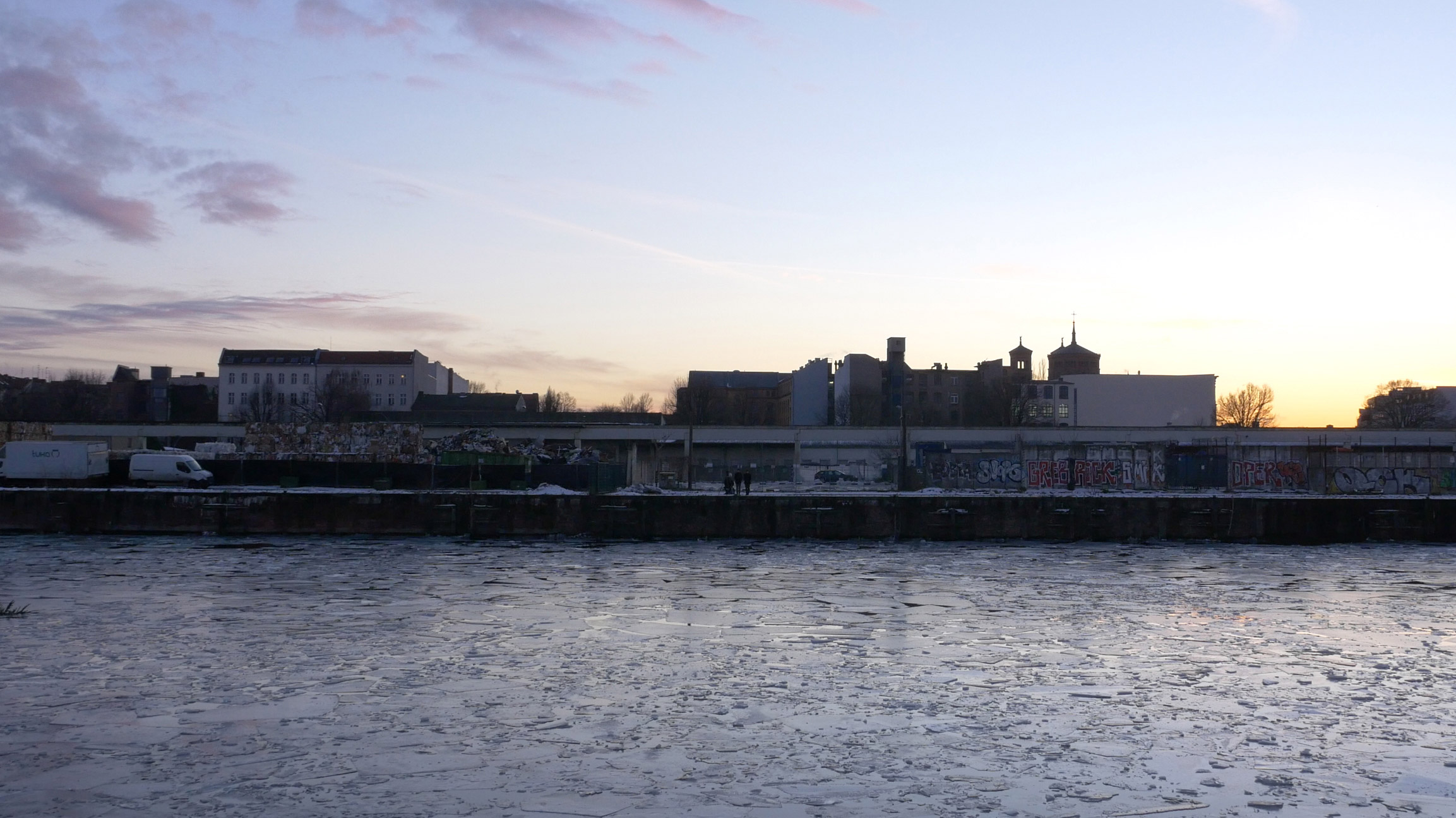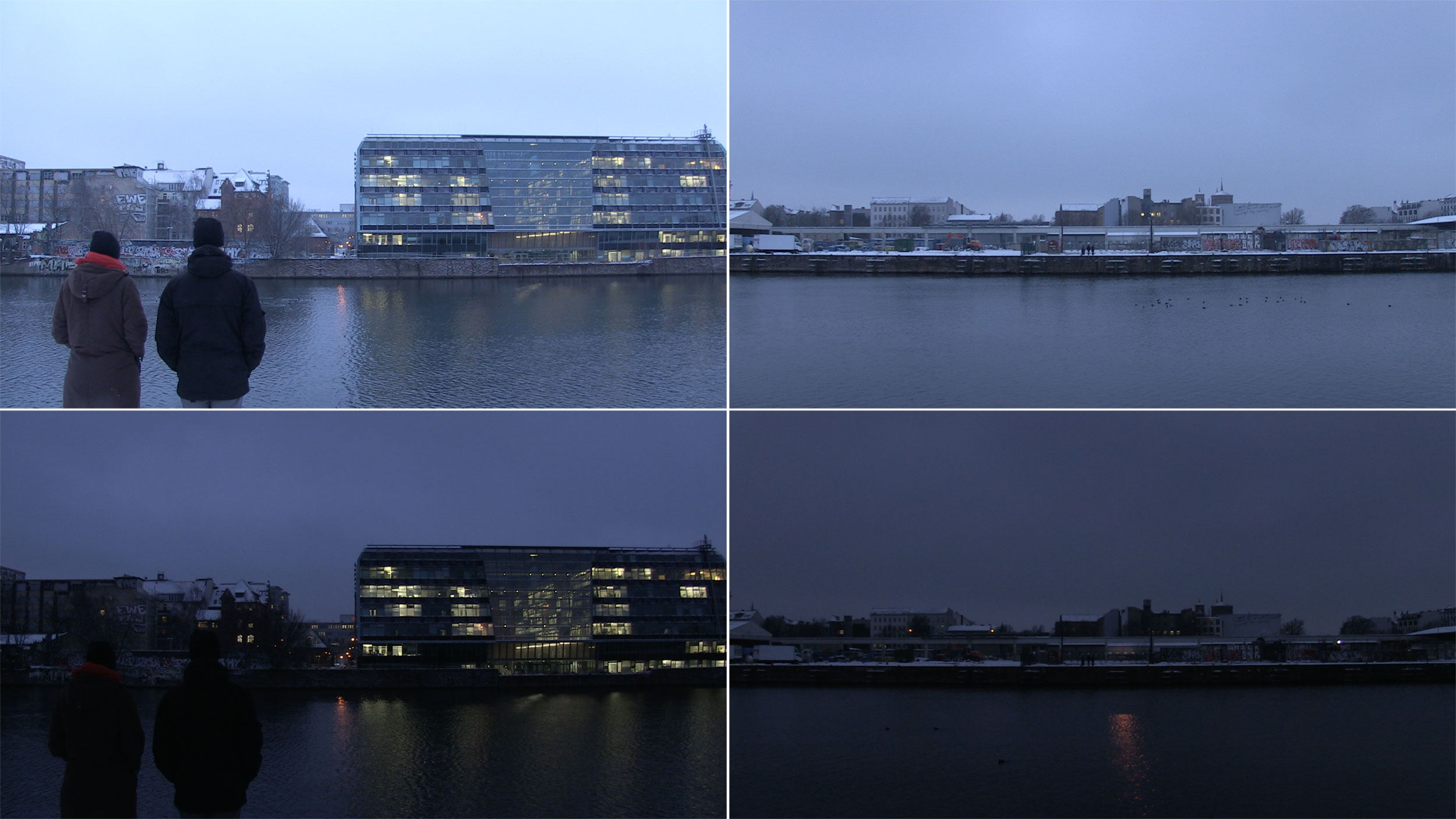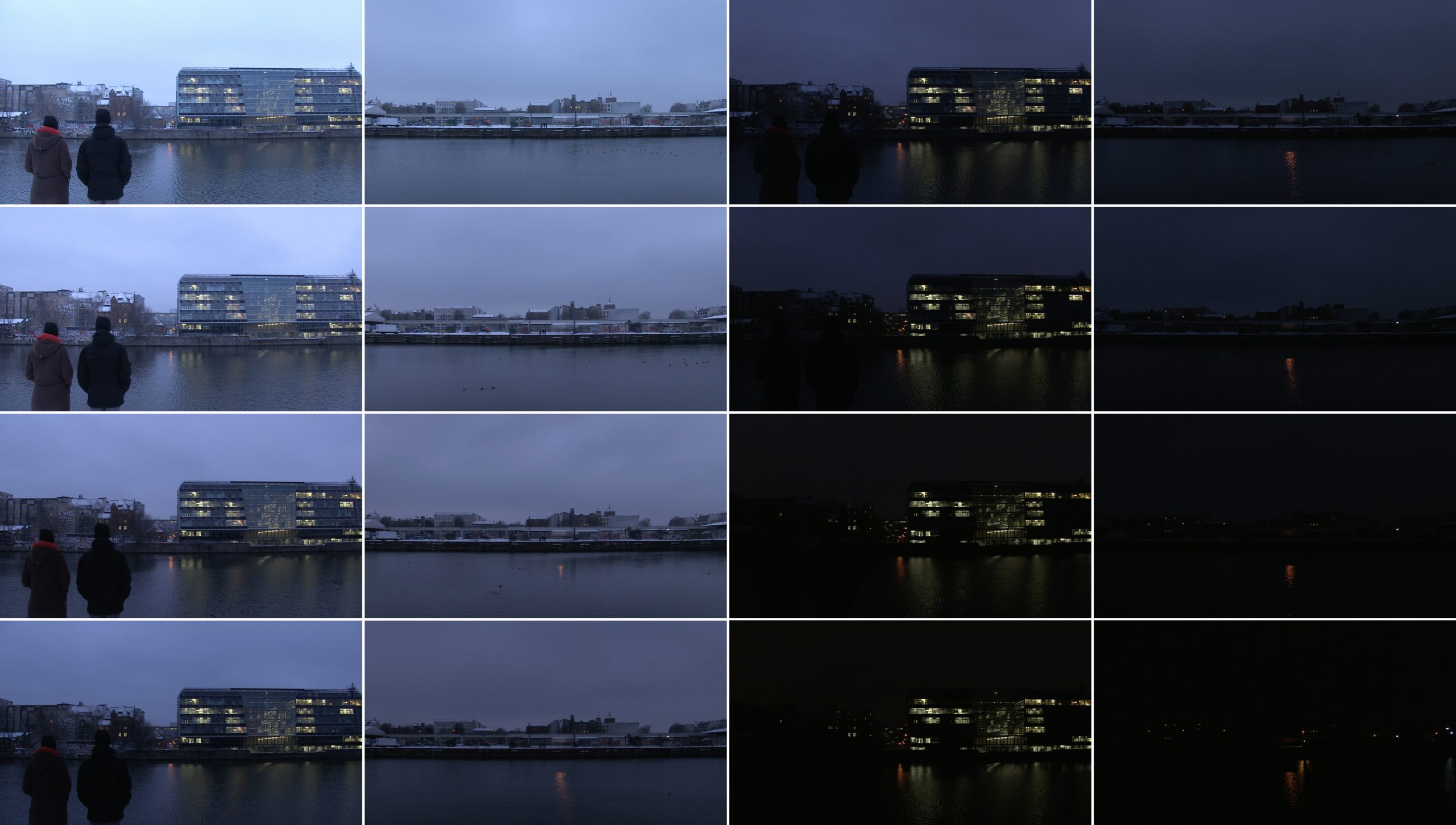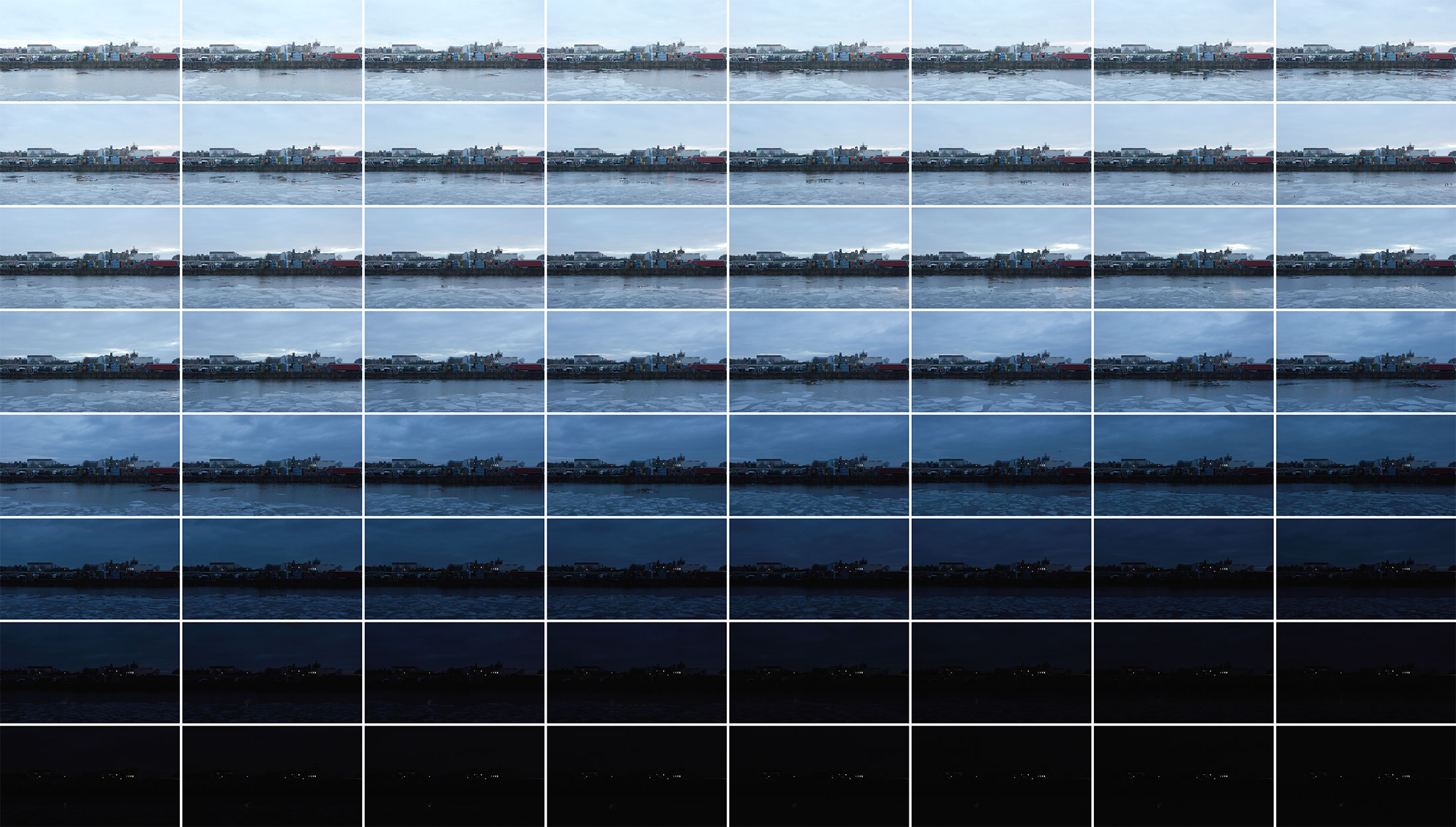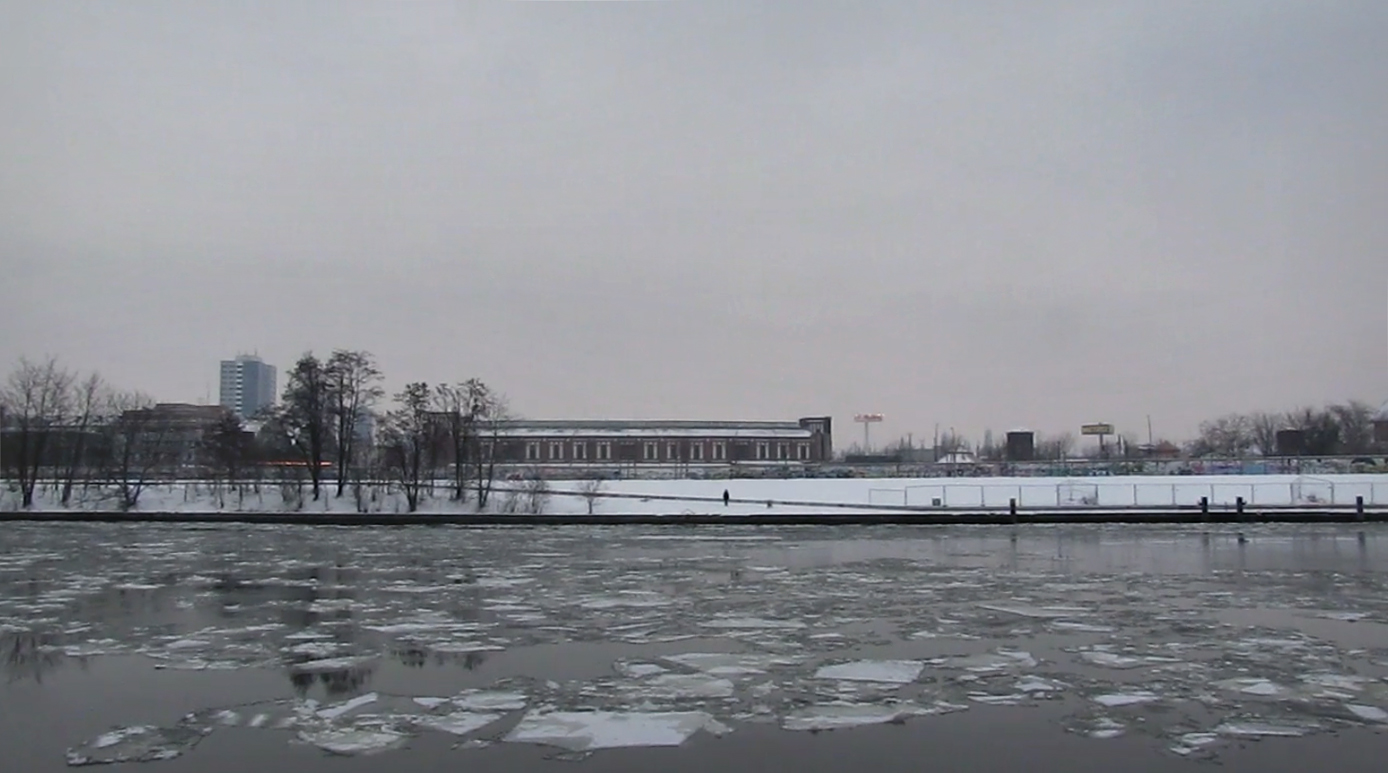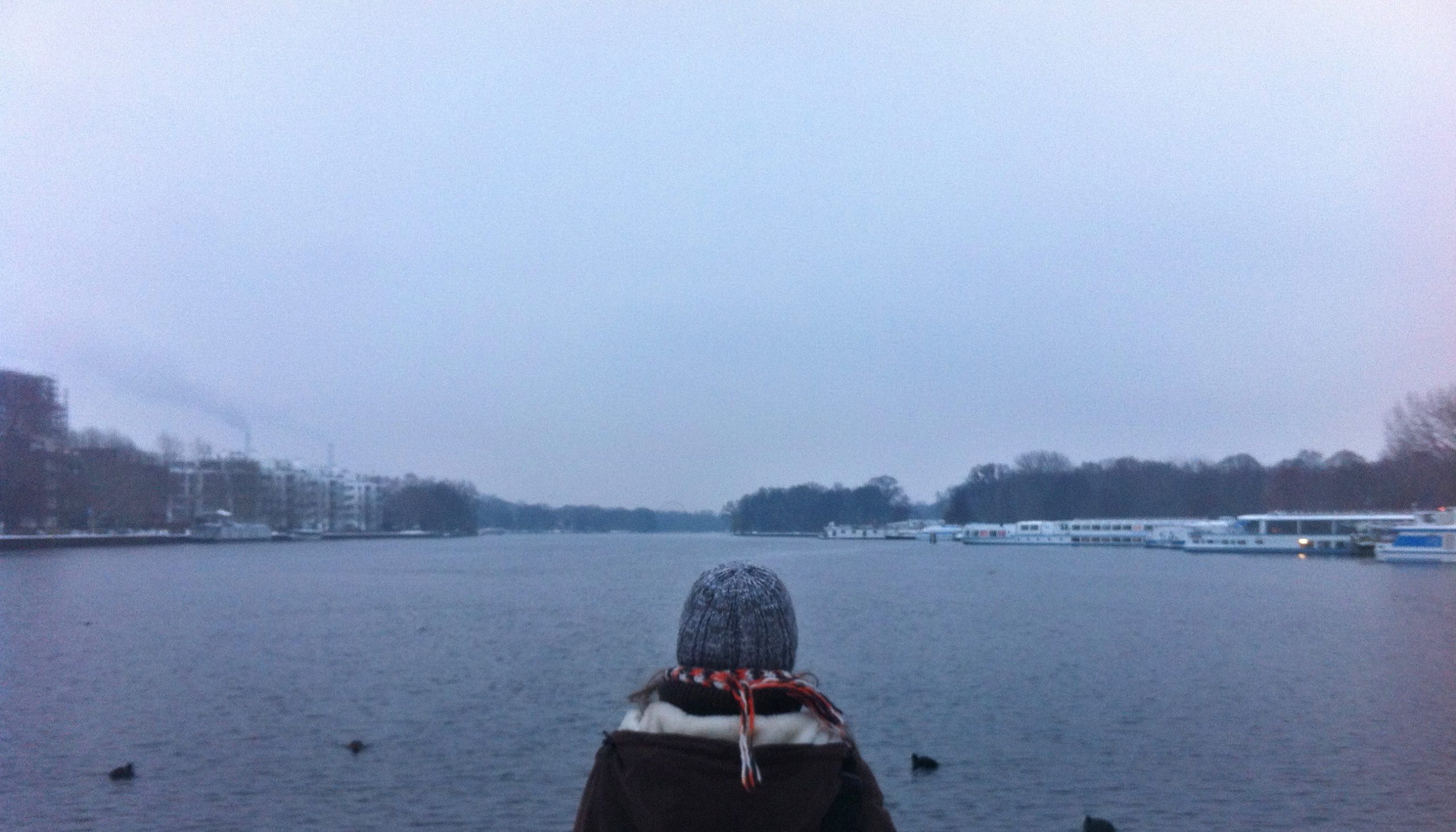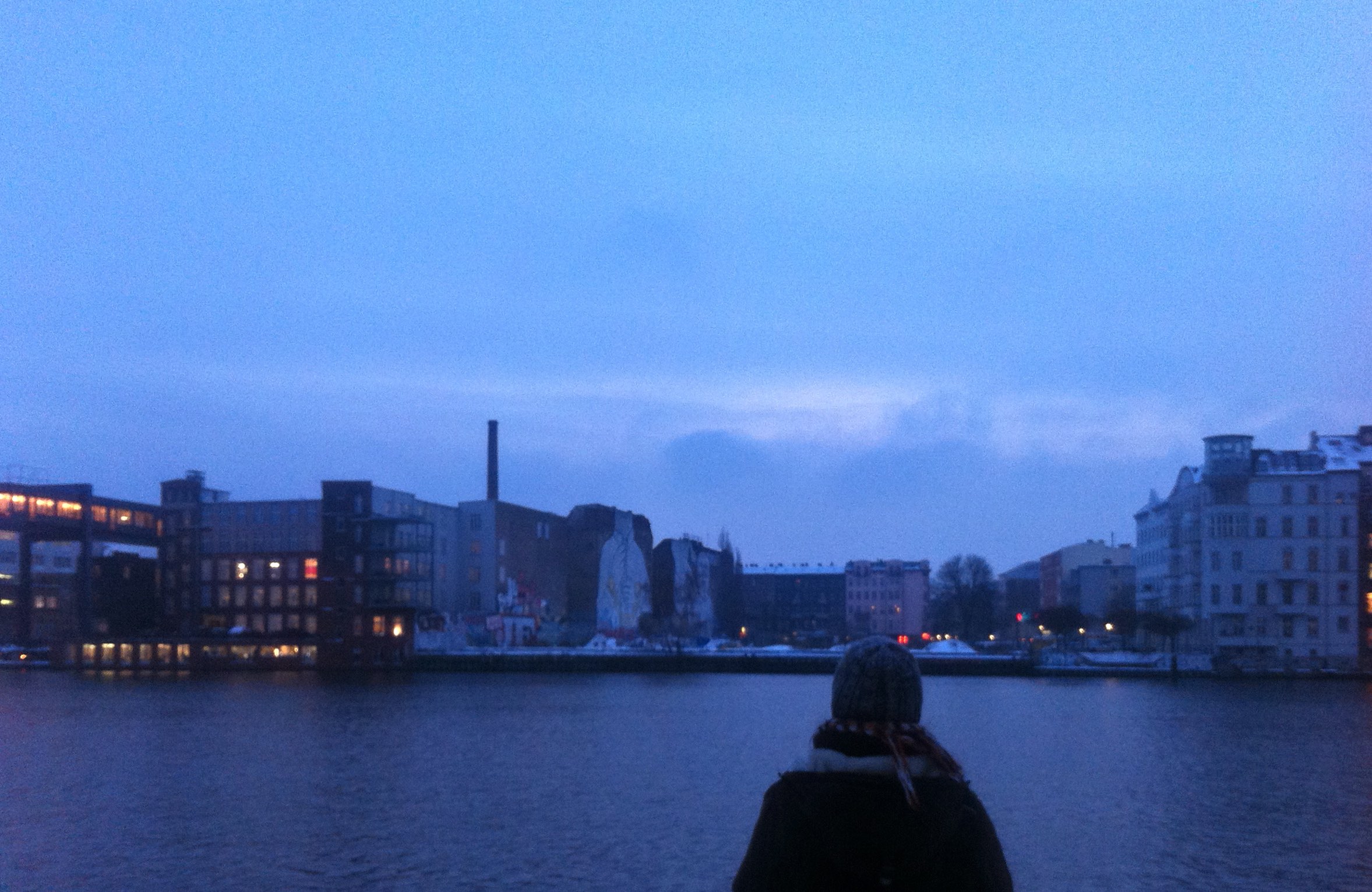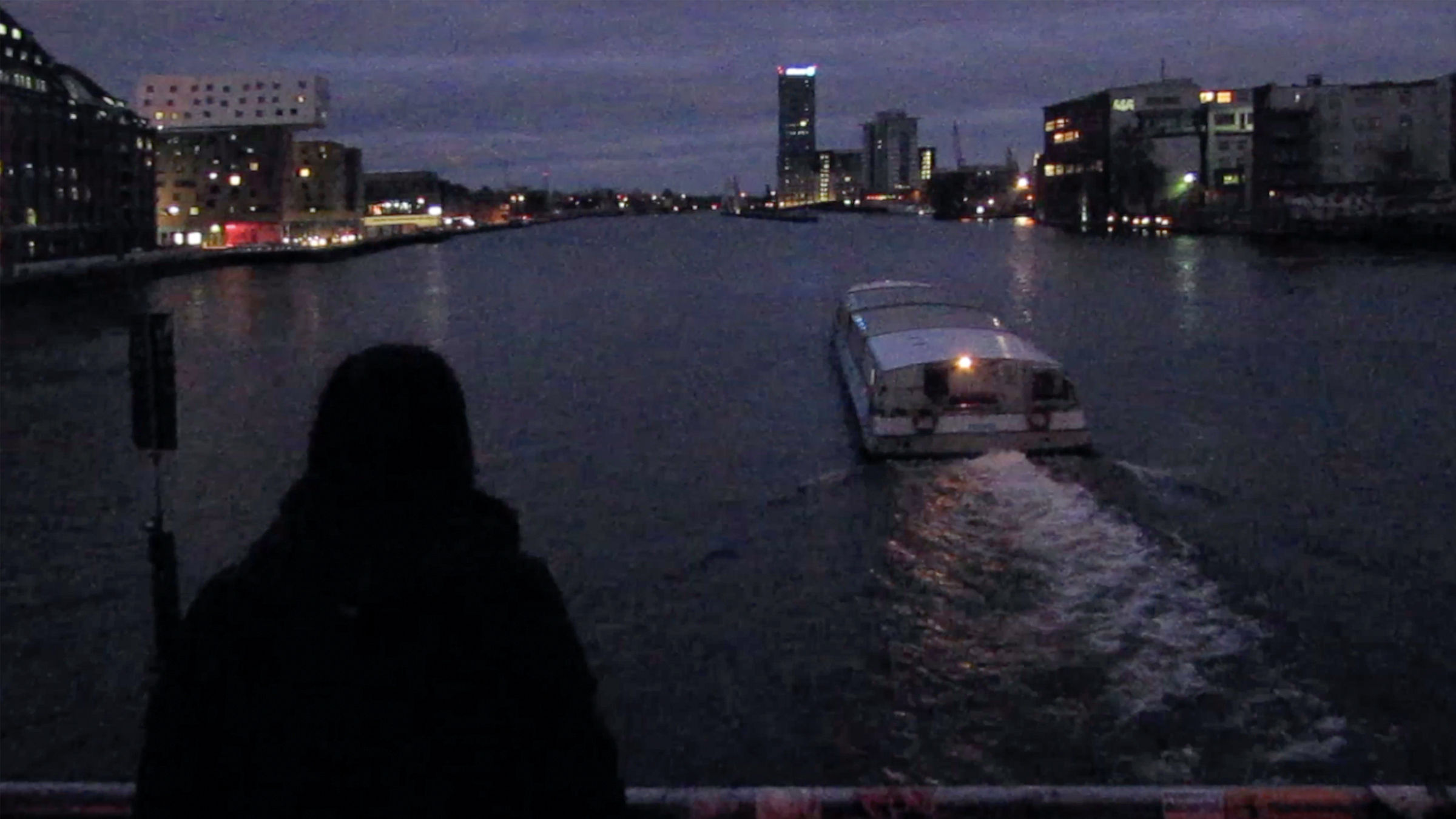Ice
Ice is a video diptych series, and a work-in-progress. This work is researched further every winter — a process which has been ongoing since 2011.
The work is a series of one-hour-long, two-channel videos. These two matching videos are always shot in two parallel single simultaneous live takes, recording a winter sunset from opposite sides of the same river, at the same location.
In these video diptychs, the sound of the ice moving on the surface of the river is audible, as the image itself fades from day to night over the course of the hour. Two figures are visible on screen, witnessing the process unfold.
The sound in the films is a combination of mundane and subaquatic: the sounds of the winter city — the traffic, birds, sirens, people, and machines — are juxtaposed with hydrophone recordings of the ice as it moves along the surface of the river. As day turns to night over the course of the work, the images become darker and darker, the dual-layer soundtrack assumes greater prominence, presenting a sonic portrait of the river, above and below the ice.
The next shoot for Ice is scheduled to take place in February 2024.
Time-lapse (without audio) of images from Ice (2016 iteration, view from eastern bank looking west)
The process of working on Ice initially emerged from a curiosity about the acoustic presence of ice on the surface of the river Spree in Berlin — specifically about the sounds made by the blocks of ice as they make their way through the city. Over time, as work on the project has continued, other aspects of consideration have emerged — one of these, for example, is that the location where the videos are filmed straddles both sides of the line of the Berlin wall. Another is that the city of Berlin has steadily changed around the river, becoming more developed and gentrified, less chaotic and punk, and so the work is a form of witnessing of the slow change in the site of the recording itself, a witnessing of the changes in the landscape of the city.
But perhaps more prominently, the work has also become an unintentional form of documentation of the change in the characters of the winters in Berlin — a quotidian mark of climate change. Since our work on this project began, the number of days each year when there is ice on the surface of the Spree have steadily reduced. The action of witnessing the moving ice on the surface of the river has changed into an activity of chasing the ice, of watching the river move with or without ice, a reflection of the changing winter climate.
Research
Location research documentation, 2013
Beginning in 2011, we have undertaken both practical and conceptual research related to Ice. This work has continued consistently since then — dependent, as always, on the conditions in the river. In 2013, the river Spree froze for several weeks, and large ice blocks were moving on its surface. The video compilation gives an overview of some of the conditions from which we were able to glean recordings.
Since 2014, the research has been concentrated in one single location, between Friedrichshain and Kreuzberg in Berlin, and video and audio since that time have been only of this location. The process of reaching this conclusion, however, involved many trips along the length of the river over the course of several winters.
